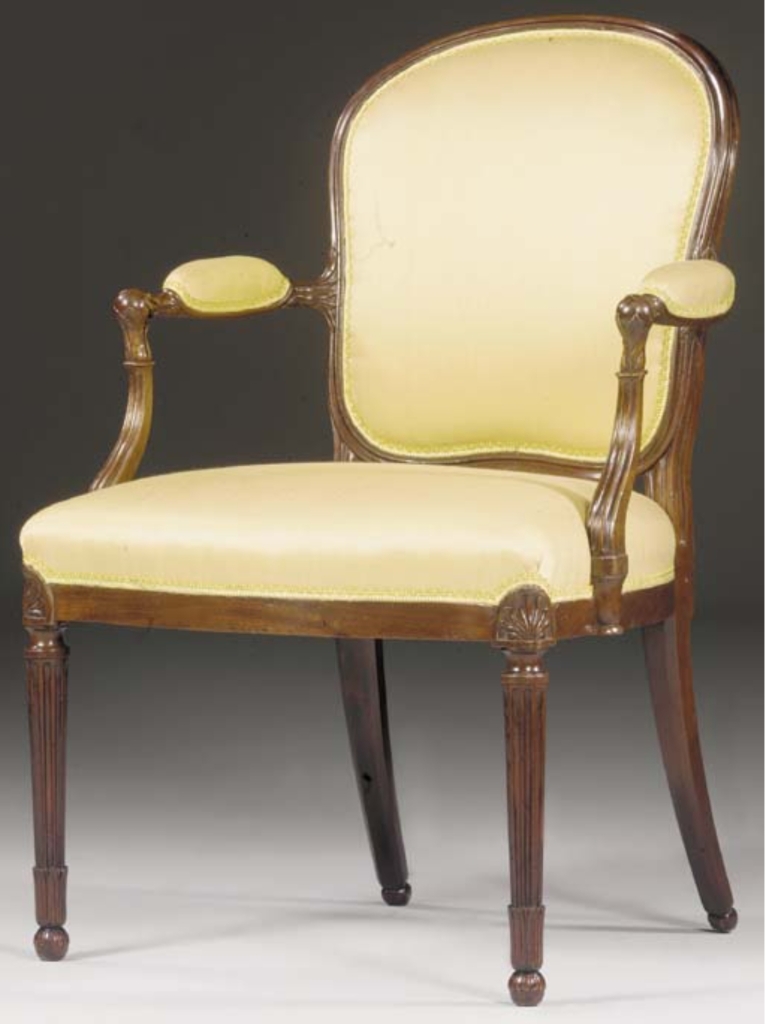






















A very well proportioned mahogany William IV revolving stool. Probably the original upholstery.

On the underside of the base, written in pencil is, “1926, GH Williams, 60 London, Headington [?] Oxford”. This information leads to George Henry Williams who were well known bicycle retailers and repairers from 1912 to 2006. Their first shop was at 60 London Road. Subsequently renumbered in the 1930s to 138-140. They were at these premises until 1955, when they moved to 115. Number 60 was demolished in 2006.


The company, run by two brothers, evolved from that of their father John Trevers Younge (1720 – 1807). He had been in partnership with Edmund Greaves and William Hoyland from 1779, but this was dissolved in 1787. William was the eldest son of John Hoyland with whom Younge had founded the business in 1765.
In 1784 plated wares were legally allowed to have a makers stamp, previously it was not. However, it was not until 1813 that S & C Younge registered the bishop’s mitre as their mark. They had registered a makers stamp for silver in 1811 which continued in use until 1828.

In December 1779 Greaves registered a patent (No.1241) for: “A Screw Nossill for Candlesticks, made of Silver or any other Metal, and also of an entire New Construction. “

The essential feature of the patent was that by rotating the nozzle, a screw mechanism was activated that raised the candle while it burnt. This allowed the last part of the candle to be used.
According to Gordon Crosskey, “Although very rare, plated candlesticks have survived marked Greaves’ Patent on the nozzles, and date from around 1780.”
This chamberstick presents some new information about the continued use of the Greaves’ Patent to a quite precise time.
The brothers took over the business in 1807, but didn’t mark their pieces with the bishop’s mitre until 1813. Therefore, it is likely that this piece dates from between these two dates. They presumably inherited the patent from their father and dropped the use of “Greaves”. The author has been unable to find any other examples of either candlesticks or chambersticks.
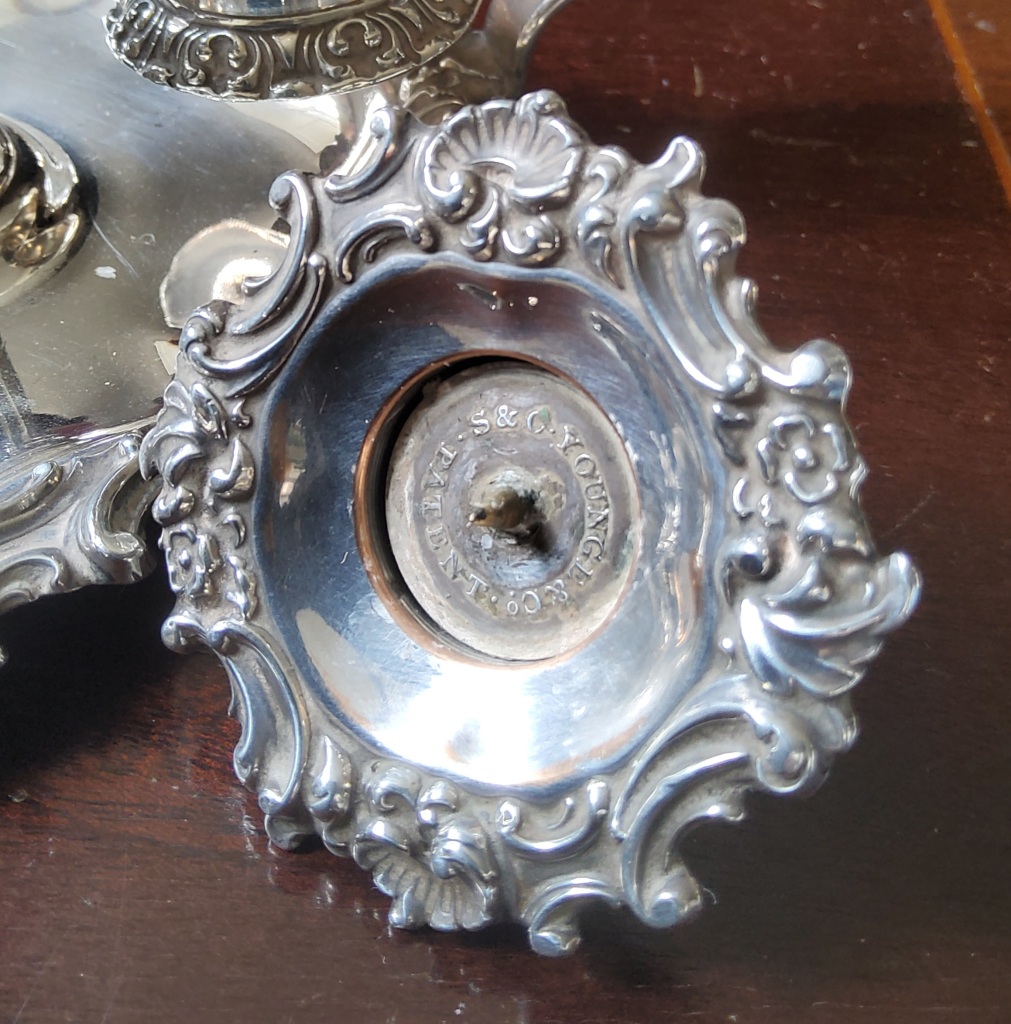
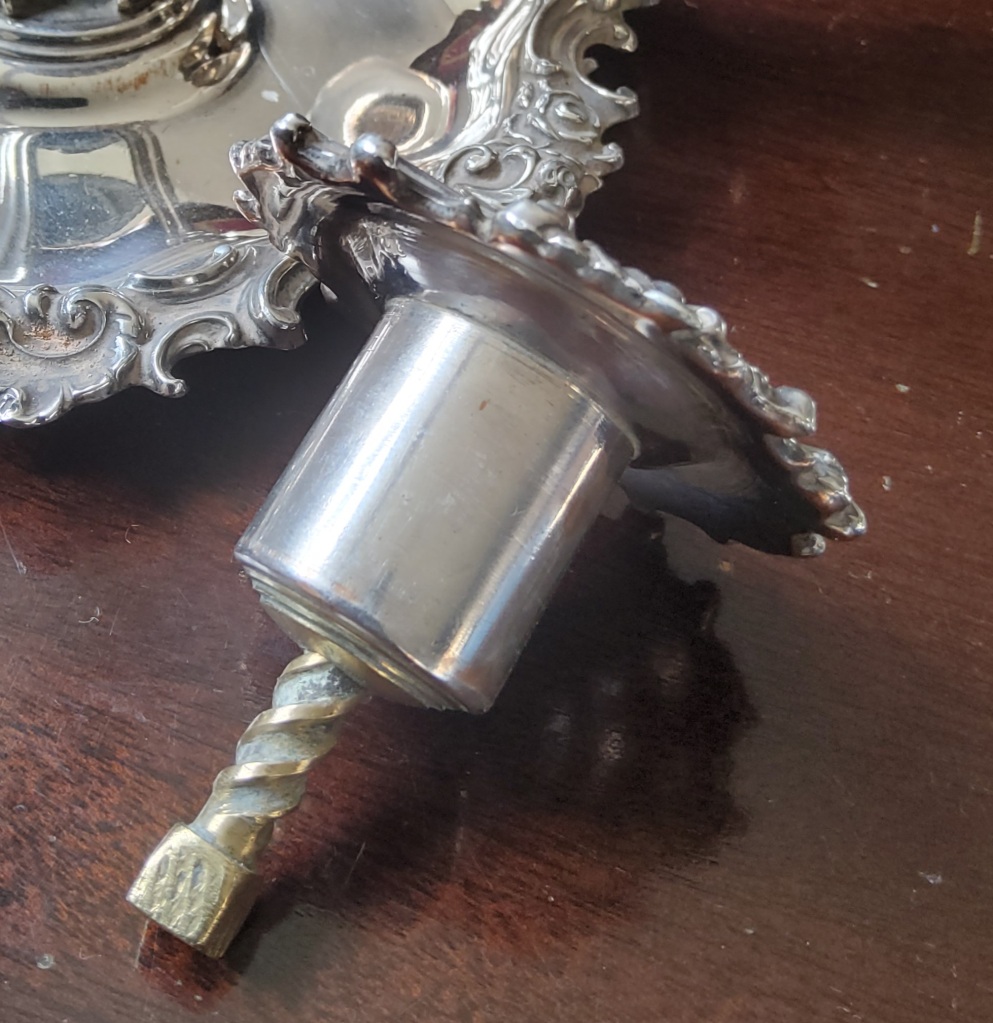






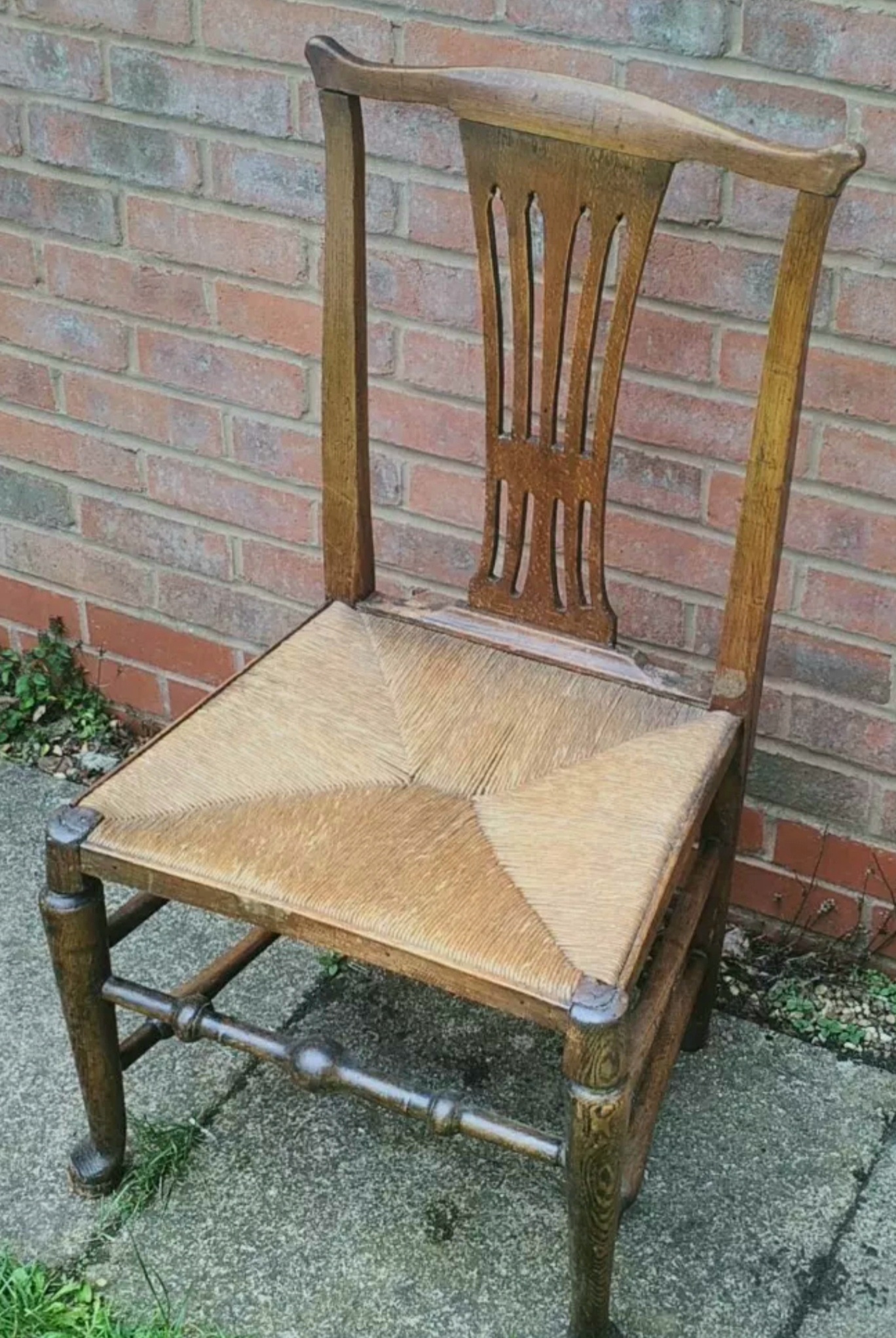

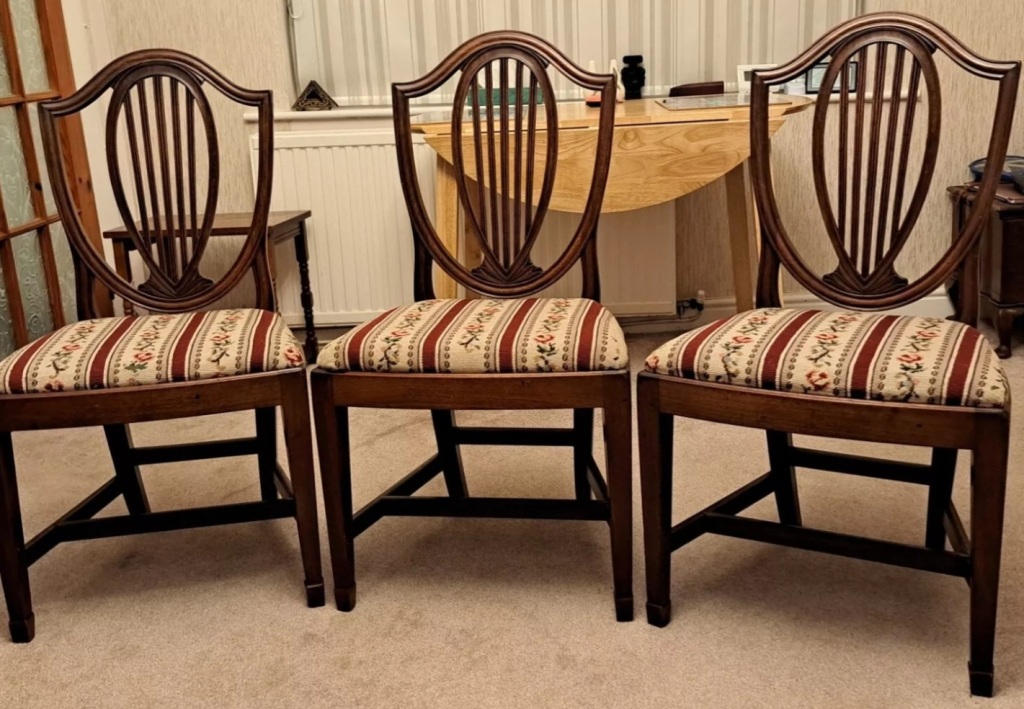

This handsome design is transitional between the curves of Hepplewhite, camel back, and the straight fluted spindles of Sheraton.
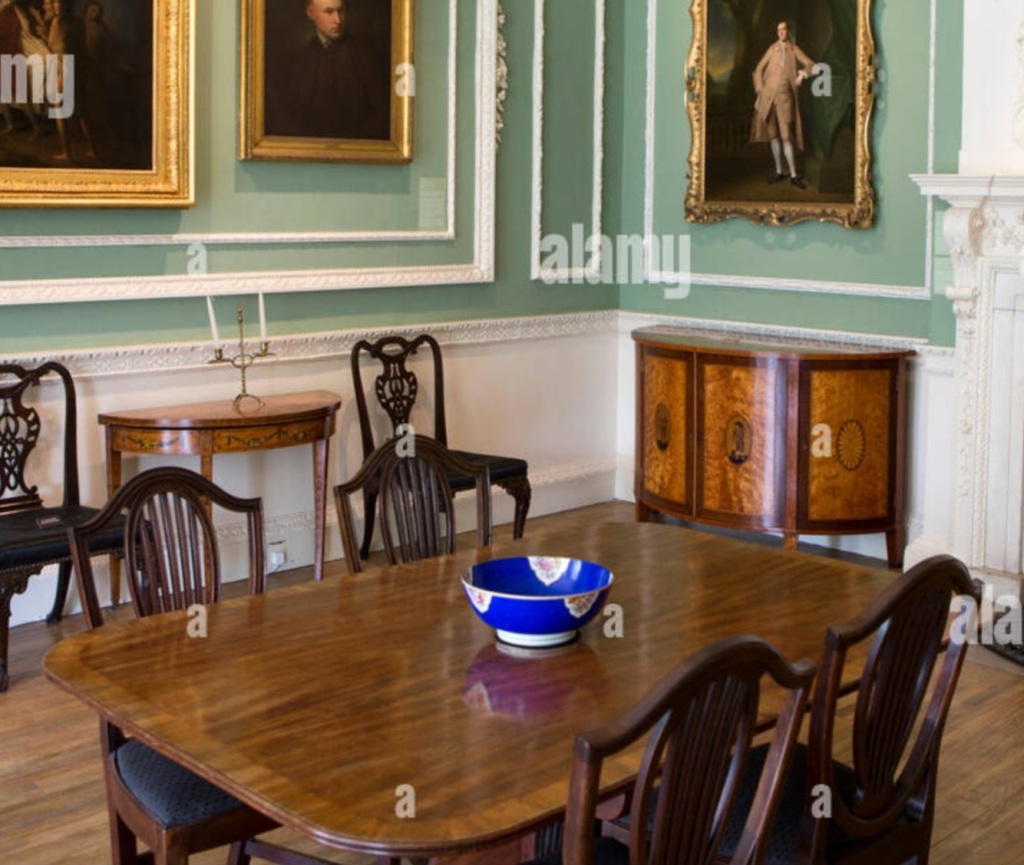

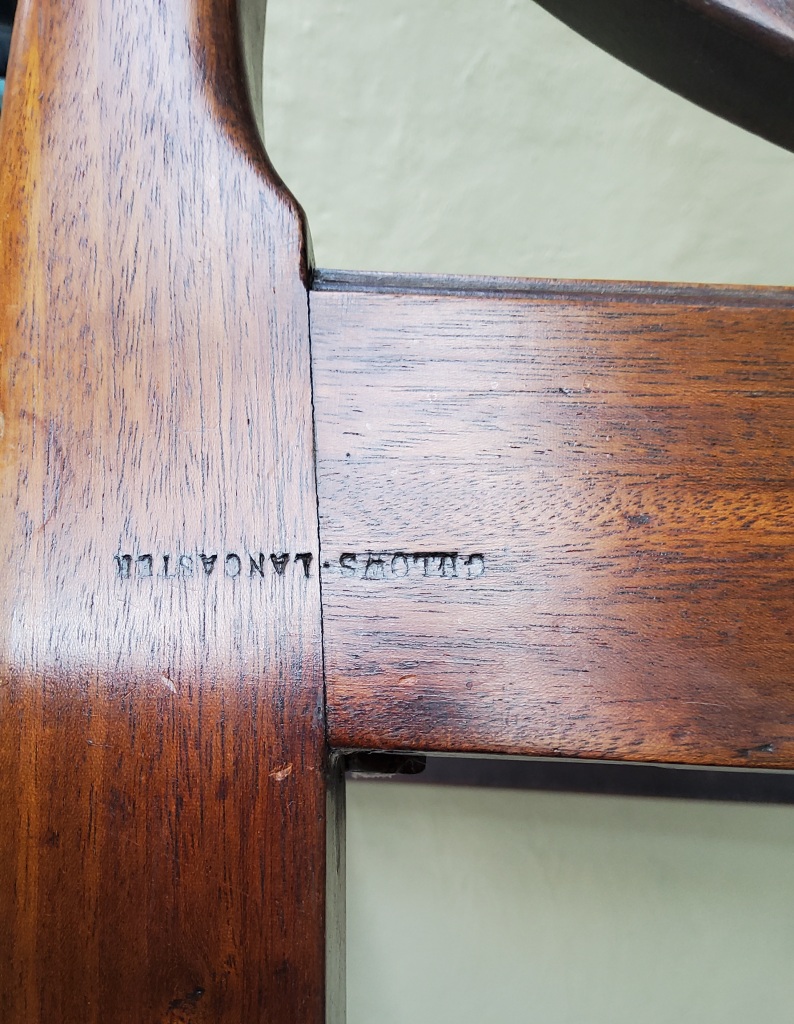




This view from above shows the typical ‘V’ joint in the stretcher concealing the secret dovetail. There is a raised edge to the seat rails into which the drop in seat neatly fits. The original curved corner blocks can also be seen.
No designs of this chair design survive, and although at first glance the chair below has little to do with the chairs in question, if you strip away the carving, the arms and gilding you notice that the back design has much in common.




The Gillows Windsor chair was made to their design by local out workers. In 1774, John Rumney of Dalton, Ulverston was paid 5 shillings each for a dozen Windsors. If these were to the same design as the known drawings is not known.
John Harrison is noted on one of the drawings, 1798, as making them in cherry and elm for 9 shillings.
Gillows employed James Wilcock snr. and jnr. of Lower Bentham to make chairs in ash and elm for 6 shillings 9 pence half penny. These were often painted green. It is believed that the majority of late 18th and early 19th century examples were made by the Wilcock’s.
After the War of Independence (1776-83) Gillows sent large numbers of these chairs to the West Indies. To save space they were sent disassembled. These may have provided the models for American cabinet makers to follow and adapt locally made chairs.

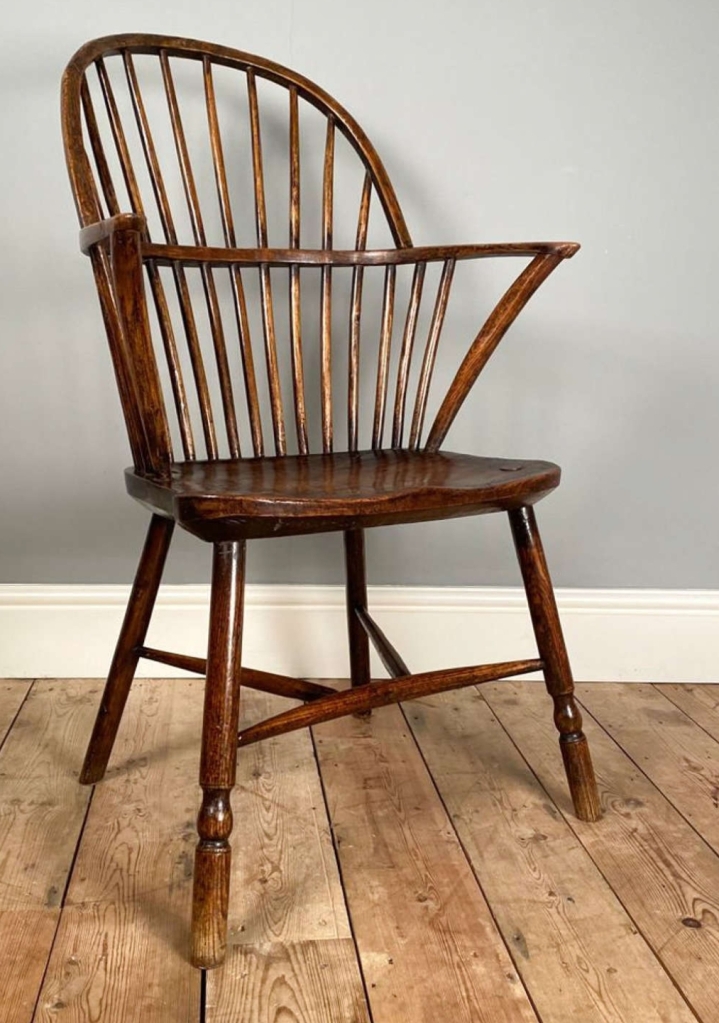




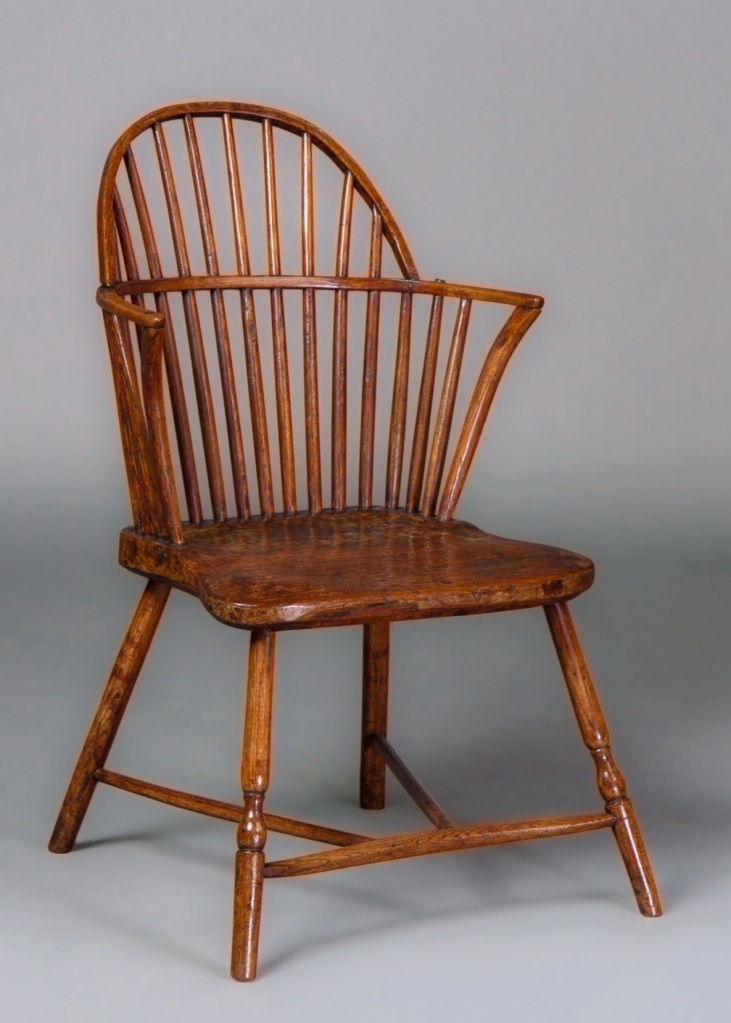



Jeanselme were a dynasty of Parisian cabinetmakers active from 1824 until the end of the 19th century. Suppliers to the courts of Louis-
Philippe and Napoleon II.
In 1847 Alphonse-George Jacob sold the Jacob-Desmalter workshop to Joseph-Pierre-François Jeanselme (1824-1860), who, together with his son Charles-Joseph-Marie Jeanselme (1827-1871), supplied fine furniture to the French and imperial courts. From 1863 to 1871 the business was run by Charles-Joseph Marie in partnership with the ébéniste Auguste Godin. In 1893 the company took over the Lemarchand workshop.
Width: 46 cm
Depth: 42 cm
Height: 86.5 cm
Seat height: 47 cm
A few similar chairs have appeared at auction over the years. Several chairs of different designs from the Jeanselme workshops are currently being offered by French dealers.



A similar pair sold at Christies,

Below a set of four chairs of a similar design. The central floral patera being much more simply carved.
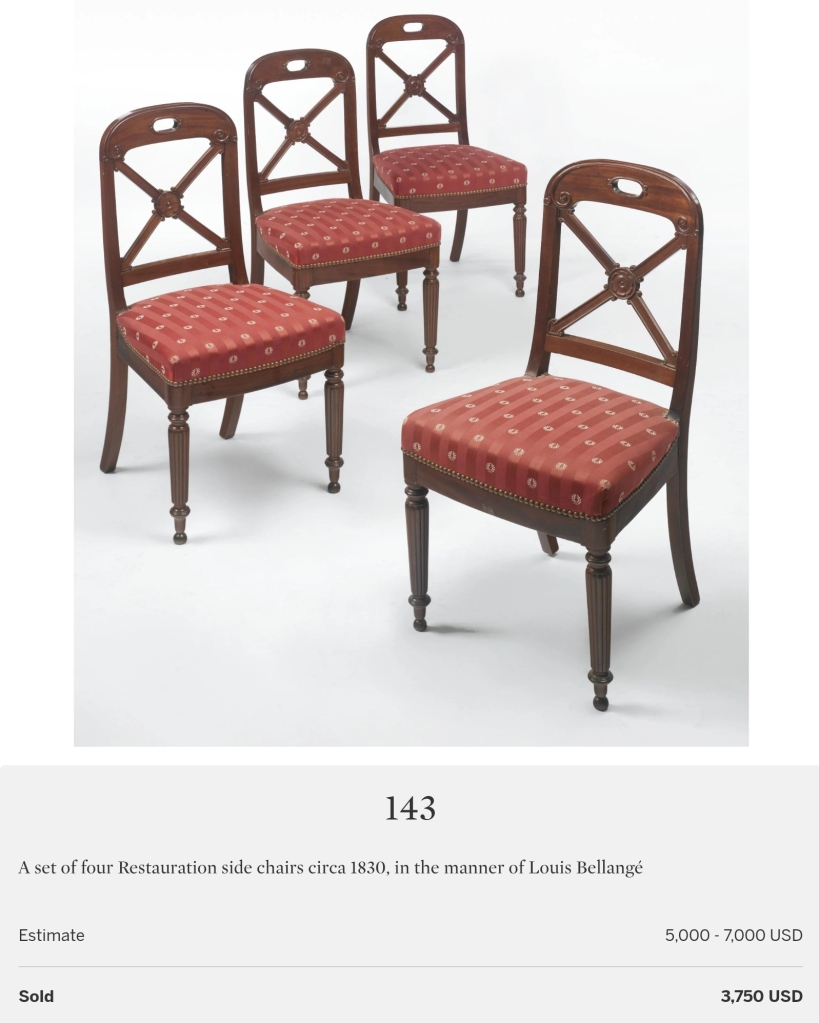




The cartouche shaped moulded back above a pierced vertical, stiff leaf and acanthus carved splat with scrolling leaf cresting. Leaf carved arms with leaf-clasped ball terminals and moulded arm supports. Stuffover serpentine seat and plain seat-rails on fluted turned tapering legs and reeded feet.

This distinctive splat pattern is used in a shield shaped back, on a satinwood armchair with green painted decoration from a suite of bedroom furniture at Castle Howard, Yorkshire, supplied to 5th Earl of Carlisle around 1780, (below).


The ball clasped terminals are a typical feature of Linnell seat furniture and appear on a set of armchairs supplied to Robert Child (d.1782) of Osterley Park (circa 1768) for either Osterley Park or for 38 Berkeley Square. The Child chairs also feature the same clasped lotus leaves where the arm joins the back and the same octagonal moulding under the ball terminal, (see below). Two armchairs from this suite were offered Christie’s London, 14 June 2001, lot 80 (withdrawn from sale).

This arm feature can also be found on a suite of seat furniture supplied to the Duke of Argyll for Inverary Castle circa 1775-78, (see below). Also H. Hayward, P. Kirkham, William and John Linnell London, 1980, Vol.lI, figs 72,87,89

John Linnell’s apprenticeship as a cabinet-maker was unusual; in addition to training with his father William’s firm on Long Acre he also attended Hogarth’s St Martin’s Lane Academy where he studied drawing and design in an international, intellectual environment. John Linnell’s artistic talent had an immediate impact upon the firm, when he joined his father full time in 1753, specialising in rococo design. Linnell’s talent combined with his St Martin’s Lane connections meant that, far in advance of most cabinet-makers, he was aware of Delafosse and was experimenting with neo-classicism by 1760.
His designs from this period show him experimenting with the new style and the results were both novel and eclectic as he cast about for new combinations of form and ornament. By 1762 Linnell was working with Robert Adam at Kedleston Hall, followed by Osterley Park in 1767. Through his direct contact with Adam, the eclectic designs of Linnell were gradually replaced with an increasingly refined pure neo-classicism that was fully established by 1775.




The chair-back resembles a rough sketch (bottom right) by Linnell, circa 1768-70, in the Victoria & Albert Museum, London (E.74-1929). This design is from a portfolio entitled: A Miscellaneous Collection of Original Designs, made, and for the most part executed, during an extensive Practice of many years in the first line of his Profession, by John Linnell, Upholsterer Carver & Cabinet Maker. Selected from his Portfolios at his Decease, by C. H. Tatham Architect. AD 1800

Charles Heathcote Tatham (1772-1842), the Regency architect-designer, was Linnel’s cousin, and the executor of his estate. The presence of a light pencil sketch next to the ink drawing demonstrates that Linnell was experimenting with the form of the arm. The ball-clasped finials are a unique feature associated with Linnell, and can be found on another Linnell design for an armchair (E.82-1929), left. The other drawings above show how he used particular design motifs in slightly different arrangements. The two on the right show the same cartouche shaped back.
